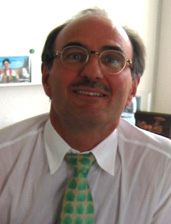Felix Gutzwiller
Year: June 30th, 2003
Interviewed by: Blackburn, Henry
Abstract
Prof. Gutzwiller reviews the pioneering Basel Study (in industry) and the Swiss Expert National (Community) Studies (surveys and interventions), undertakings that provided a base for the Swiss MONICA contribution and continuing efforts at surveillance and prevention programs. He describes the efforts of the WHF Epidemiology and Prevention Council and ESC working group in CVD epidemiology, as well as his career and its interactions with Fred Epstein. (Henry Blackburn)
Quotes
Origins of the Swiss National Project:… there was this new research instrument in Switzerland being developed – National Research Programs. Up to that point we had just regular financing of research protocols and there was a change in paradigm and people felt this would be a new source of financing for the national questions of interest to a large public, of important national priorities, etc. And after a long selection process as the first topic the relevant bodies chose cardiovascular epidemiology combined with a community approach to population health… Schweitzer knew that I was… interested in some of these issues so he asked if I wanted to be part of the project. And that was the reason I came back, in fact, to develop that community intervention program, which he had set up. There was an Expert Committee that was supervising the whole show, of which Schweitzer was Chairman and, in fact, I was also a member of that in ’78-79.
It was called the Expert Group National Research Program I… There was one for the Swiss-Italian part and one for the Swiss-German part. So we developed a proposal that benefited quite a bit from Fred’s [Epstein] general experience. There was community health issues, but also from his specific experience with two small communities here in Zurich and also probably somewhat from the Tecumseh Study in the United States about community-oriented prevention.
So we developed a protocol looking at five cities in the three language areas of Switzerland and comparing directly intervention pairs, cities of similar size, similar sociological structure, population, to where there was no intervention. Even though formally with five entities because the fifth one was a further comparison unit in the Swiss-Italian part and there was no intervention at that time because there was not enough money. (3)
[ed. When asked about the Victoria and Barcelona Declarations]
I don’t think we have taken many of these elements in the development of the basic philosophy, for instance, of… the Swiss Agency for Health Promotion. However, I had, if I may add a slight critical note, I didn’t, for instance go anymore to the follow-up conference of Barcelona because I had very strongly the feeling and I still have it, that health promotion to be really effective in a complicated world we are living should integrate some general principles that go far beyond cardiovascular health. I was more in line with the general philosophy for health promotion such as The Declaration of WHO.(7)
The European Society I think is also something that was always very important. I think also that in the early days of the Working Group Fred [Epstein] was very helpful with the contacts with the American Epi Council and similar experiences that helped us a lot. Yeah, it was, I think, an important working group, still going strong. I have been for a while it’s chairman. It’s still a good group, a strong section, it has a good place within the European Society of Cardiology. It allows for regular interaction with the clinical side and also the basic science side, which is a lot of fun, too…It’s been important in the lipid issue. Fred also is someone, I think, that really tried to get the two sides together while preserving their professional identities. (9)
Trends in Switzerland:… I still keep interest in the role of cardiovascular disease in old age, which is part of a different dimension. If you think about the change of disease, which in Switzerland is now a disease of elderly women, not any more of the middle-aged male… It keeps my interest… In age-adjusted rates there is the last 20 years a slight but steady decrease for males. For women it’s quite stable, but with a much faster prolongation of life. In fact, really the whole pattern goes up into more and more old-age groups and for the last two or three years we have in terms of cases even more cases among women due to the fact that [they are] six or seven years older than… males. It’s also become a clinical issue because the disease is in a way a disease of the elderly women with a lot of diagnostic and therapeutic issues…(11)
Full Transcript Access
Full transcripts of interviews may be made available to those engaged with original materials for scholarly studies by contacting us.
